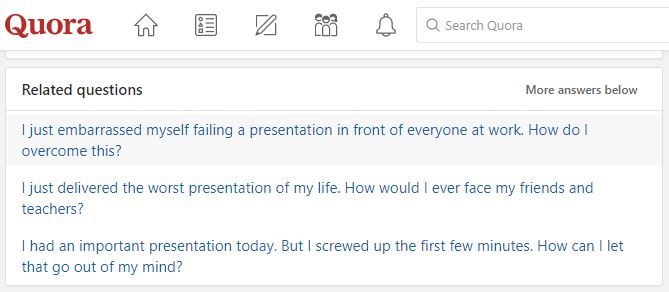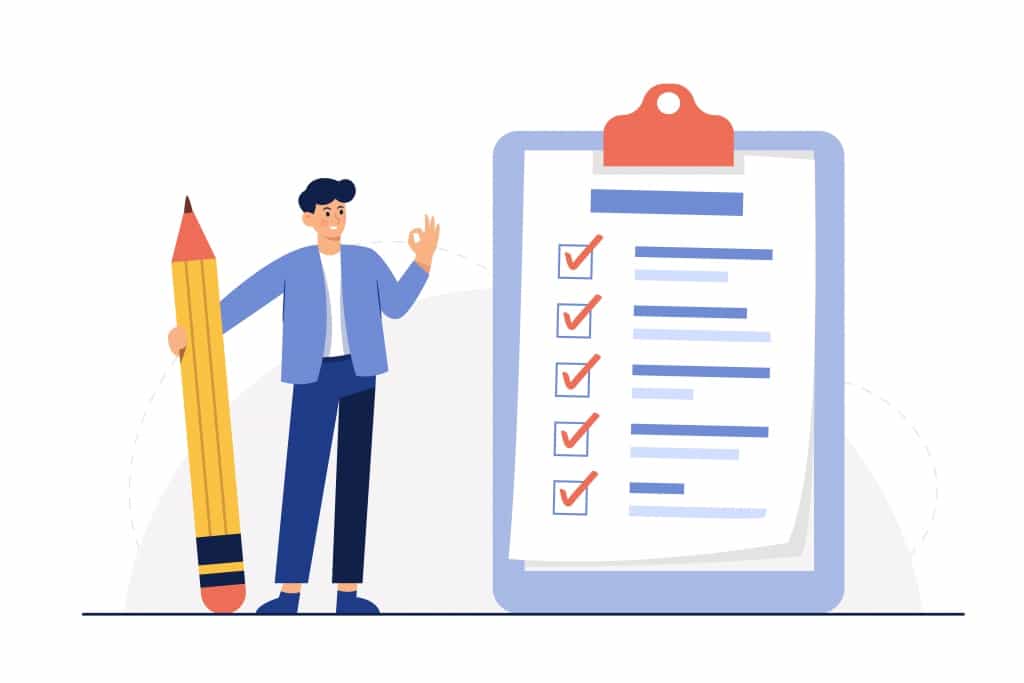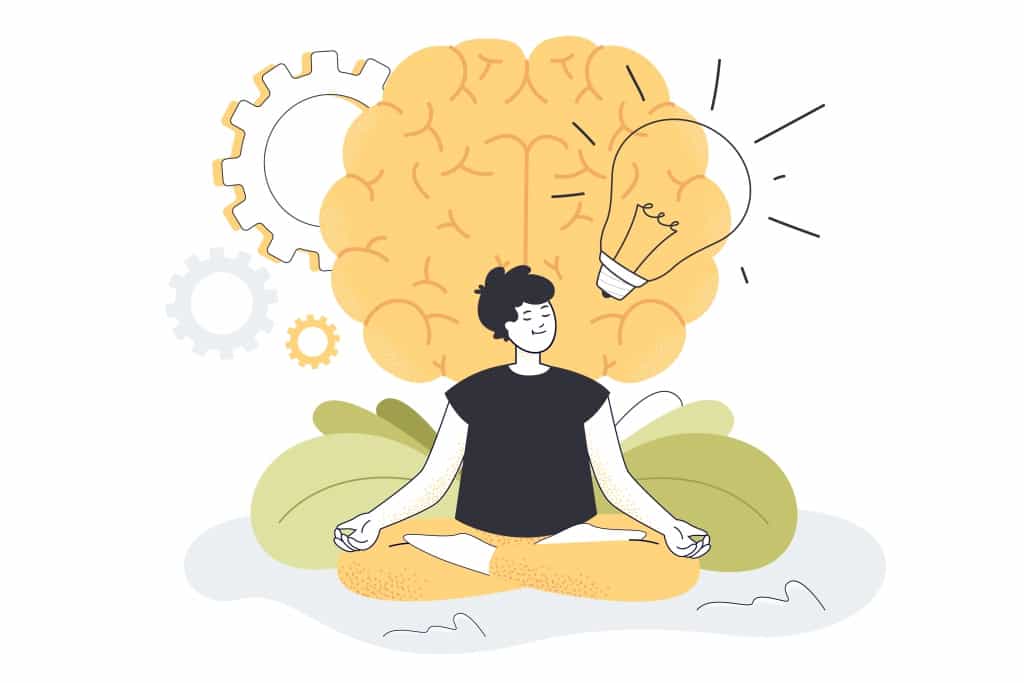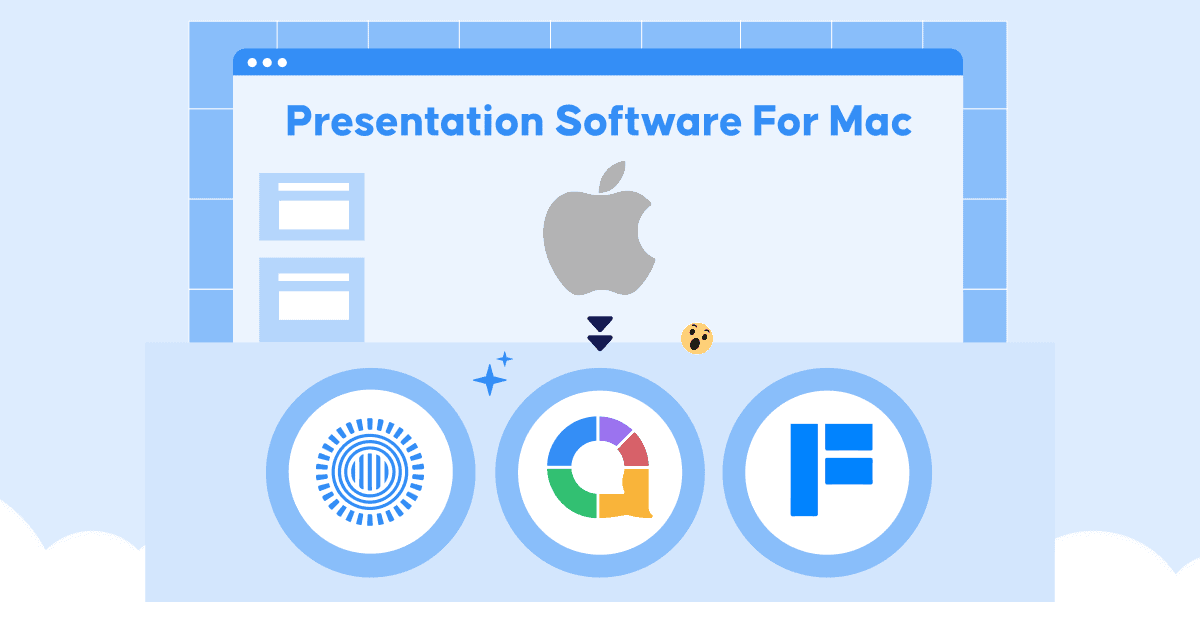I gave a bad presentation at work. I am finding it hard to face people in my office now. How should I get over it? - This is an evergreen topic on popular forums like Quora or Reddit. Most of us working people seem to have problems with presentations and do not know how to overcome this pain.
Hey! Don't worry; AhaSlides would be more than happy to help you by giving common mistakes everyone might face & how to fix them.
Table of Contents

'Can I Refuse To Do A Presentation At Work?'
This question must be on the minds of people who fear public speaking.

This fear can happen due to fear of failure, audience, high stakes, and being the centre of attention. Thus, when faced with a presentation, many people experience the classic fight-or-flight response such as heart palpitations, tremors, sweating, nausea, shortness of breath, dizziness, and resulting presentation problem that makes the "a sad memory" such as:
- You turn your presentation into a lullaby that makes everyone yawn, roll their eyes, or keep checking their phones to see when you're done. The phrase "Death by PowerPoint” was coined for that reason.
- Your mind goes blank. No matter how many times you practice, just being on the stage makes you forget everything that needs to be said. You start standing still or drunk with nonsense. Make the presentation end with shame.
- You are running out of time. This could result from not timing your rehearsal first or technical problems. Whatever the reason, you end up making a bad presentation that makes the audience not understand what you are trying to convey.
Common Presentation Mistakes In A Bad Presentation And How To Fix It
What makes a bad presentation? Here are 4 common mistakes that even professional speakers can make & tips to fix:
Mistake 1: No preparation
- Great speakers always prepare. They know the topic to talk about, have an outline of the content, design impressive slides, and carefully study the key issues they want to present. Many people only prepare their presentation material 1-2 days or even hours before the presentation. This bad habit leads to the audience only hearing vaguely and not understanding what is happening. Since then, bad presentations have been born.
- Tips: To optimize audience perception and get the results you want after your presentation, practice speaking out loud at least once before standing on stage.
Mistake 2: Too much content
- Too much information is one of bad presentation examples. With the first presentations, you inevitably get greedy, cram too much content at once and include tons of videos, charts, and images. However, when all these types of content are used up, the presentation will become lengthy, with too many unnecessary slides. As a result, you will have to spend time reading the letters and numbers on the slide and skipping the audience.
- Tips: Outline the highlights you want to convey to your audience. And remember that the fewer words, the better. Because if a slide is too long, you will lose the audience by lacking connection and convincing. You can apply The 10 20 30 Rule.

Mistake 3: No eye contact
- Have you ever witnessed a presentation where the speaker spends all of his time looking at his notes, the screen, the floor, or even the ceiling? How does this make you feel? That is one of examples of bad presentations. Looking someone in the eye helps establish a personal connection; even one look can draw an audience. If your audience is small, try to make eye contact with each individual at least once.
- Tips: To make a visual connection, eye gestures directed at each person must last at least 2 to 3 seconds or long enough to say a full sentence/paragraph. Effective eye contact is the most important nonverbal skill in a speaker's "toolbox".
Mistake 4: Discrete presentation
- Although we spend most of our day talking to each other, speaking to an audience is a difficult skill and one that we need to practice regularly. If anxiety causes you to rush your presentation, your audience may miss important points.
- Tips: Stabilize your mind by taking deep breaths to prevent confusion. If you start talking nonsense, it will take some time for you to settle down. Take a deep breath, and pronounce each word clearly as you focus on slowing down.
Keys Takeaways

It takes a lot of practice and effort to get a good presentation. But your presentation will be much better if you avoid common pitfalls. So here are the keys:
- Joint presentation mistakes include not preparing properly, providing inappropriate content, and speaking poorly.
- Check the location and familiarize yourself with the device first to avoid possible problems.
- Keep your presentation clear and concise, and use appropriate visual aids.
- Make sure you mention terms that are in line with your audience's understanding so that your presentation avoids confusion.
But this part is just a way to deal with the technical aspects, prepare for a good presentation and help you to avoid "Death by PowerPoint".
As for those who have lived with disaster experiences of a bad presentation, the next section is your mental recovery.
5 Ways To Recover From A Bad Presentation

To help you through the nightmare named a bad presentation, please do the methods given below:
- Accept disappointment: It's not always a good idea to "think positively" because feeling uncomfortable is normal. Accepting disappointment will allow you to let it go more quickly and move on. Give yourself time to endure the sadness and get up to the fight.
- Practice self-compassion: Don't treat yourself in too harsh ways. For example, “I am a loser. No one wants to work with me anymore." Don't talk to yourself like that. Don't let yourself lower your self-worth. Talk to yourself like you would speak to your best friend.
- It doesn't mean anything about you: A lousy presentation doesn't mean you're a disaster or not qualified for the job. There will be factors you can control or not, but whether it's the presentation's content or the technical problem, your presentation disaster means nothing about who you are.
- Use failure as a motivation: A lousy presentation is an opportunity to figure out why it went wrong and to improve on the next production. You can learn more about how to avoid common mistakes that cause bad speeches here.
Use Interactive Presentation Software To Make Your Dream Speech Come True
Using Interactive Presentation Software has excellent benefits and can turn your bad presentation into a great one. It:
- Increase audience engagement, allowing them to connect with you and the purpose of your presentation.
- Improve retention. 68% of people say it's easier to remember information when the presentation is interactive.

How AhaSlides Interactive Presentations Works for You
Team Meetings
Create exciting virtual and in-office team meetings with AhaSlides. Engage your team with a live survey for instant feedback on how things are going with your business, any concerns the group may have, and any new ideas that colleagues think of. This not only creates opportunities for new ideas but makes your team feel listened to and cared for.
Team Building Sessions
Even virtually, you can create meaningful team building activities to get your team participating and working better with each other.
An online quiz can be a great way to have everyone involved, or use our spinner wheel feature for an icebreaker game such as Never Have I Ever. These team-building exercises can be used as a social activity or during work hours as a break to get the team re-energised.
Project Kickoff
Get your team prepared with a well-organised kickoff meeting for your next project. Introduce everyone to the project and get them settled with popular ice-breakers. Use live polls and Q&As to efficiently compile everyone's ideas and opinions, leading to a practical goal-creation strategy. Then, assign all your tasks and get started.
You can also use AhaSlides business to check in periodically to see how everyone is getting on and if you’re all on the same page.
Sales Proposal/Pitch Deck
Create unique and bespoke sales proposals with eye-catching business presentations. Include your branding and edit to suit your audience. Make sure your pitch gets noticed with amazing features such as polling, Q&A, and brainstorming, and then complete the captivating with highly visual slides.
Brainstorming Ideas
Use a good old-fashioned brainstorming session, with a modern twist to get ideas flowing. Start with an icebreaker game to get your team energised and their brains active. The closer the group feels to each other, the more likely they are to share their ideas.








